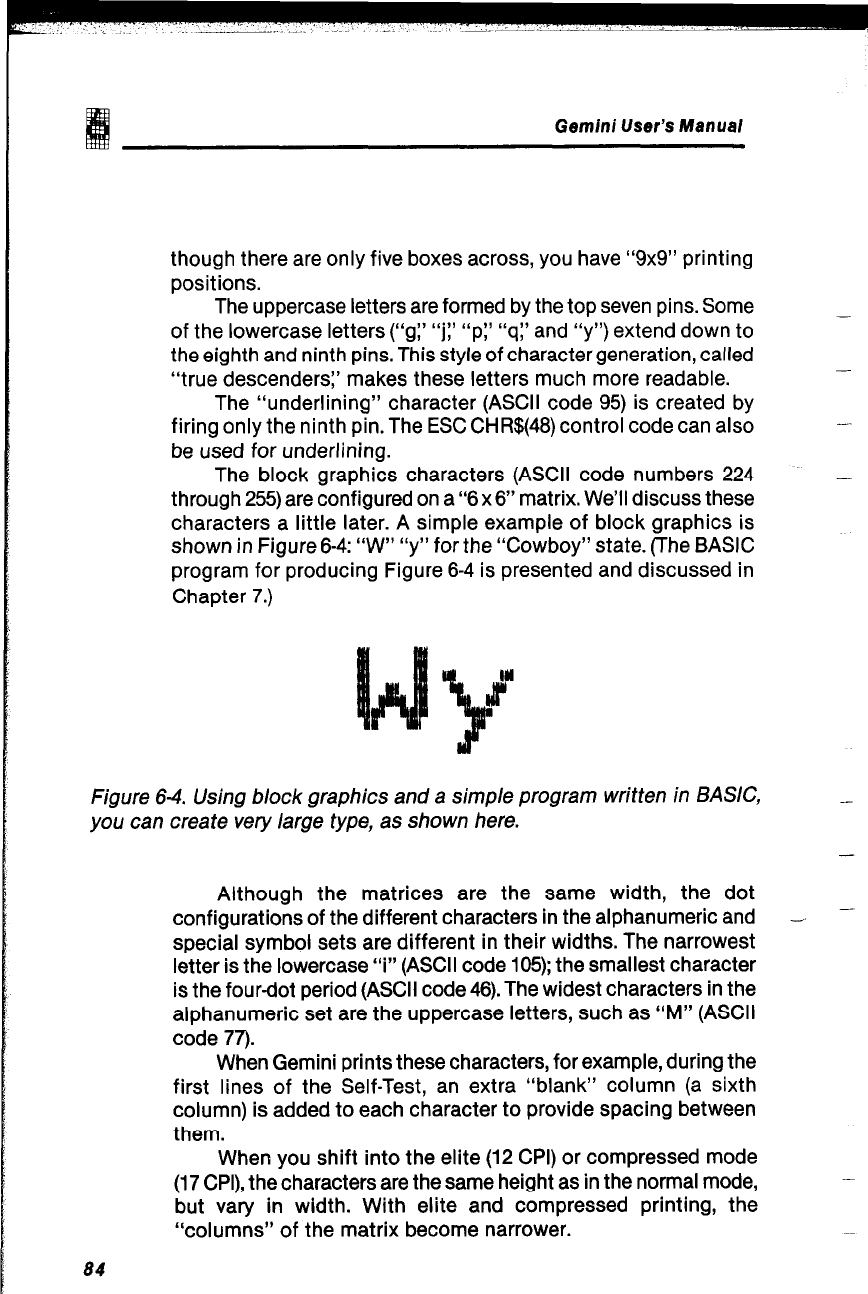
Gemini User’s Manual
though there are only five boxes across, you have “9x9” printing
positions.
The uppercase letters are formed by the top seven pins. Some
of the lowercase letters (“9:’ “j:’ “p:’ “q:’ and “y”) extend down to
the eighth and ninth pins. This style of character generation, called
“true descenders:’ makes these letters much more readable.
The “underlining” character (ASCII code 95) is created by
firing only the ninth pin. The ESC CHR$(48) control code can also
be used for underlining.
The block graphics characters (ASCII code numbers 224
through 255) are configured on a “6 x6” matrix. We’ll discuss these
characters a little later. A simple example of block graphics is
shown in Figure 6-4: “W” “y” for the “Cowboy” state. (The BASIC
program for producing Figure 6-4 is presented and discussed in
Chapter 7.)
Figure 6-4. Using block graphics and a simple program written in BASIC,
you can create very large type, as shown here.
Although the matrices are the same width, the dot
configurations of the different characters in the alphanumeric and
-.
special symbol sets are different in their widths. The narrowest
letter is the lowercase “i” (ASCII code 105); the smallest character
is the fourdot period (ASCII code 46). The widest characters in the
alphanumeric set are the uppercase letters, such as “M” (ASCII
code 77).
When Gemini prints these characters, for example, during the
first lines of the Self-Test, an extra “blank” column (a sixth
column) is added to each character to provide spacing between
them.
When you shift into the elite (12 CPI) or compressed mode
(17 CPI), the characters are the same height as in the normal mode,
but vary in width. With elite and compressed printing, the
“columns” of the matrix become narrower.
84


















